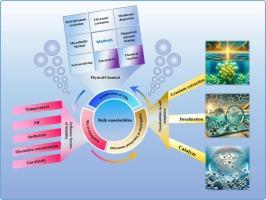Nanoscale engineer: The revolutionary role of nanobubbles in the synthesis of functional nanomaterials
IF 8.3
1区 工程技术
Q1 ENGINEERING, CHEMICAL
引用次数: 0
Abstract
The study of bulk nanobubbles (NBs) has long been an interest of the scientific community. Recent studies have highlighted the revolutionary role of NBs as nanoscale engineers in the synthesis of functional nanomaterials in a sustainable, controllable and soft-template manner. In this process, the preparation and stability control of NBs is particularly critical, which directly determines the performance of the soft template and the quality and functionality of the final material. This review focuses on the key breakthroughs of NBs as green and soft templates for the fabrication of functional nanomaterials. The emerging technique, which allows for the control over the size, morphology, and properties of the nanomaterials by adjusting the characteristics of the bulk NBs templates, shows significant promise. The burgeoning preparation techniques for NBs, including physical and chemical methods, are first outlined. The application scenarios and relative merits of different NBs producing methods are compared and analyzed. Recent advances in the control of NBs stability are then discussed, considering the influence of temperature, pH, surfactant, electrolyte, and gas properties on NBs stability. Finally, the recent achievements of NBs-templated nanomaterials for the applications in uranium extraction, catalysis and desalination are emphasized, while the underlying mechanisms for material preparation and optimization are also discussed.

纳米工程师:纳米气泡在功能纳米材料合成中的革命性作用
对体态纳米气泡(NBs)的研究一直是科学界的兴趣所在。最近的研究强调了 NBs 作为纳米级工程师在以可持续、可控制和软模板方式合成功能纳米材料中的革命性作用。在这一过程中,NB 的制备和稳定性控制尤为关键,它直接决定了软模板的性能以及最终材料的质量和功能。本综述重点介绍 NB 作为绿色软模板用于制造功能纳米材料的关键突破。这种新兴技术通过调整块状 NBs 模板的特性来控制纳米材料的尺寸、形态和性质,显示出巨大的前景。首先概述了新兴的 NBs 制备技术,包括物理和化学方法。比较并分析了不同 NBs 制备方法的应用场景和相对优势。然后,考虑到温度、pH 值、表面活性剂、电解质和气体特性对 NBs 稳定性的影响,讨论了在控制 NBs 稳定性方面的最新进展。最后,重点介绍了最近在铀萃取、催化和海水淡化领域应用 NBs 模板纳米材料的成果,并讨论了材料制备和优化的基本机制。
本文章由计算机程序翻译,如有差异,请以英文原文为准。
求助全文
约1分钟内获得全文
求助全文
来源期刊

Desalination
工程技术-工程:化工
CiteScore
14.60
自引率
20.20%
发文量
619
审稿时长
41 days
期刊介绍:
Desalination is a scholarly journal that focuses on the field of desalination materials, processes, and associated technologies. It encompasses a wide range of disciplines and aims to publish exceptional papers in this area.
The journal invites submissions that explicitly revolve around water desalting and its applications to various sources such as seawater, groundwater, and wastewater. It particularly encourages research on diverse desalination methods including thermal, membrane, sorption, and hybrid processes.
By providing a platform for innovative studies, Desalination aims to advance the understanding and development of desalination technologies, promoting sustainable solutions for water scarcity challenges.
 求助内容:
求助内容: 应助结果提醒方式:
应助结果提醒方式:


